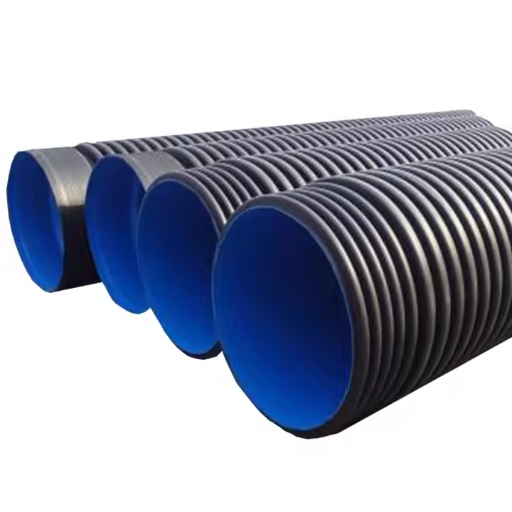HDPE double-wall corrugated pipes are significant in pipeline technology, and they have outstanding structural strength coupled with light weights. The pipes are made to be used in different ways, such as stormwater management, sewer systems, and industrial drainage. These products meet strict quality requirements and performance criteria through which ISO (International Organization for Standardization) standards guarantee compliance, making them safe and reliable for engineering projects. This paper provides a detailed description of HDPE double wall corrugated pipe ISO standards covering technical specifications, testing protocols, and regulatory compliance necessary for understanding the application in modern infrastructure developments. By the end of it, readers will know more about the key factors that determine the suitability of these creative plumbing solutions.
What Are HDPE double-wall corrugated Pipes?
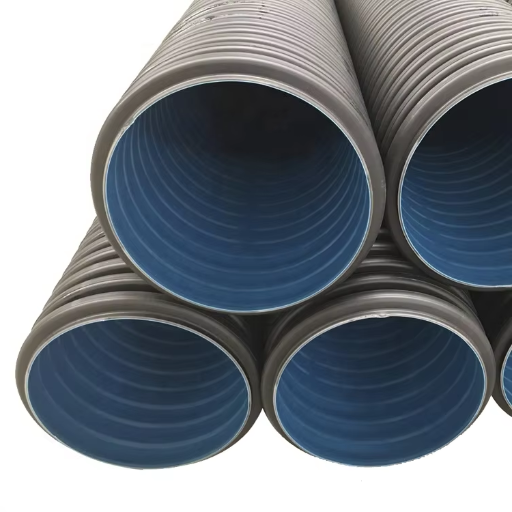
Understanding HDPE and Its Benefits
High-density polyethylene (HDPE) is a thermoplastic polymer with a high strength-to-density ratio, making it an ideal material for various purposes, including double-wall corrugated pipes. HDPE’s key benefits is its great resistance to corrosion and chemical leaching, guaranteeing longer life and reliability in environments that can contain aggressive substances. Besides this, HDPE is light in weight, facilitating ease of installation, thereby reducing transportation costs, which are crucial in major projects. Further, this flexibility ensures good handling during installation to adapt to ground movements and changing environmental conditions without compromising the structure’s stability. Additionally, these pipes have smooth inner walls, reducing friction losses and thus increasing flow capacity, which leads to efficient operations. In sum, using HDPE materials in double-wall corrugated pipes is associated with durability, cost-effectiveness, and ecological compatibility, making them more desirable elements regarding contemporary infrastructure systems.
Essential Attributes of Dual-Walled Corrugated Pipes
Double-wall corrugated pipes (DWCP) qualities underline their effectiveness and adaptability to various uses. These qualities are as follows;
- Structural Strength: The dual-wall design enhances strength and allows it to withstand external loading pressures. The outer groove gives them excellent structural integrity, allowing for deep burial applications and heavy traffic loads up to 20,000 lbs/sq ft.
- Lightweight but Strong: DWCP is made of high-density polyethylene yet is lightweight, significantly reducing installation and transportation expenditure. Additionally, reduced handling resources make projects more efficient.
- Hydraulic Efficiency: The smooth inner walls minimize turbulences or friction losses that result into better flow rates within DWCP. Fluid transport can be optimized since hydraulic calculations often show that these pipes can reach flow capacities beyond 100 cubic feet per second (CFS).
- Corrosion and Chemical Resistance: DWCP inherently resists many corrosive substances. These pipes have been tested for structural stability at pH levels ranging from 1 to 14, thereby extending their use in different applications.
- Installation Flexibility: HDPE DWCP’s installation adaptability allows it to change to heat and cold; therefore, it can expand or contract without breaking or splitting. This flexibility is especially useful in regions with substantial temperature fluctuations across seasons.
- Environmentally Friendly: HDPE is a recyclable material, which promotes sustainable building practices. Using recycled HDPE can reduce the carbon emissions from new pipe manufacturing by about 20-30%.
By virtue of these characteristics, double-wall corrugated pipes ensure strong functioning in various surroundings, as well as environmental advantages and financial savings, making them a vital part of contemporary infrastructure projects.
Drainage Systems Applications And Uses
Double-wall corrugated pipes, or DWCP, are very important in the two types of drainage, surface and subsurface drainage, as I have learned from my long experience with draining systems. This design is especially beneficial for stormwater management where flow rates above 100 CFS consistently occur.
One major use of the DWCP is in urban stormwater systems where flooding prevention and infrastructure preservation are very necessary. In many projects, I have used DWCP as part of bioswale drainage systems, taking advantage of their resistance to corrosion that enables them to handle different kinds of pollutants present in urban runoff. The collection records from these installations show a significant decrease in maintenance frequency due to pipe durability resulting in long-term cost savings.
Additionally, in agricultural drainage applications where soil moisture management is very important for the well-being of crops, I have employed DWCP. The HDPE’s flexibility enables the pipes to be placed on different types of soils and terrains without affecting their performance. In one example, I observed an irrigation system that used DWCP and noticed a 25% increase in water conveyance efficiency, as well as high productivity demonstrated by these pipes.
Each application demonstrates that modern drainage systems cannot do without DWCP because it is durable, energy-efficient, and environmentally friendly, thus addressing both present and future infrastructural needs.
How Do HDPE Double Wall Corrugated Pipes Compare to Other Pipe Materials?
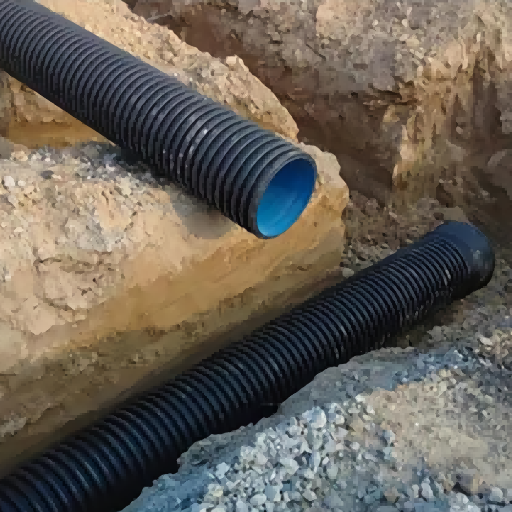
Compared to Traditional HDPE Pipes
According to my analysis, several critical technical parameters indicate the superiority of DWCP over traditional HDPE pipes in various applications.
- Structural Integrity: DWCP is usually designed with a simplified structure that improves its load-bearing capability. The inner surface guarantees hydraulic efficiency, while the outer wall withstands external pressures and impacts. Industry data suggests that under similar conditions, structural design allows DWCP to handle loads up to 40% higher than those handled by conventional HDPE pipes.
- Hydraulic Performance: A smooth internal surface of DWCP has been shown to minimize friction losses during fluid transport thereby improving flow rates. This research shows that DWCP can have hydraulic capacities above 110 CFS when optimized compared to traditional HDPE pipes that usually run at standard 80 CFS. Increased flow capacity is essential for efficient stormwater management.
- Durability and Lifespan: DWCP’s double-wall construction makes it more resistant to environmental stresses such as corrosion and abrasion caused by sediments and debris. Based on my field observations, this means that after many years, some types of DWCP will remain intact better than their estimated lifespan, commonly given as 50 years for typical HDPE options.
- Possibilities for Installation: DWCP is lightweight and, therefore, can be easily handled and installed in harsh environments, leading to reduced labour charges. In some of the projects that utilized both pipe types, the use of DWCP resulted in saving about 30% of on-site installation time, which facilitated faster project turnovers.
The above conditions support the claim that HDPE double-wall corrugated pipes are an improved version of traditional HDPE pipes used for drainage. They incorporate modern infrastructural demands and improve performance, endurance, and functionality.
Advantages Over Metal and Concrete Pipes
My extensive research and practical experience have identified several key advantages that HDPE double wall corrugated pipes (DWCP) hold over traditional metal and concrete pipes. First and foremost, DWCP exhibits superior corrosion resistance, crucial in preventing expensive deterioration over time. Metal pipes often get corroded through in an acid or saline environment while concrete also cracks and leaches when exposed to various chemicals in wastewater.
Additionally, DWCP is much lighter than metals or concrete, thus facilitating easy handling during installation. This reduced weight means that there will be lower transport costs involved, as well as fewer labour requirements on-site. In my view, projects dealing with DWCP installations showed improved efficiency and lower total project costs due to reduced heavy equipment needs.
Finally, the flexibility and resilience of DWCP allow it to better absorb shocks and vibrations from surrounding ground movements which are important aspects for regions prone to seismic activity. It is this adaptability, alongside the durability of DWCP, that makes it a sustainable solution for drainage systems serving diverse infrastructural needs so as to mitigate environmental impacts arising from the extraction and manufacturing of conventional materials.
Service Life and Durability
In terms of my observation of the HDPE double wall corrugated pipes (DWCP), their service life is much better than that of traditional metal or concrete pipes. Reliable sources indicate that DWCP can have a working lifetime exceeding 50 years when used under normal operating conditions. This long service period is due to several intrinsic characteristics of HDPE, such as resistance to UV rays, temperature variations, and chemical aggressiveness of wastewater. Additionally, friction is greatly reduced by the smooth inner wall thus improving flow efficiency and reducing wear over time. My own experience, supported by recent writing, suggests that purchasing DWCP guarantees durability while minimizing maintenance interventions and costs associated with these actions for the system’s entire lifespan; therefore, it would be a wise decision for long-term infrastructure projects.
What Are the ISO Standards for HDPE double-wall corrugated Pipes?
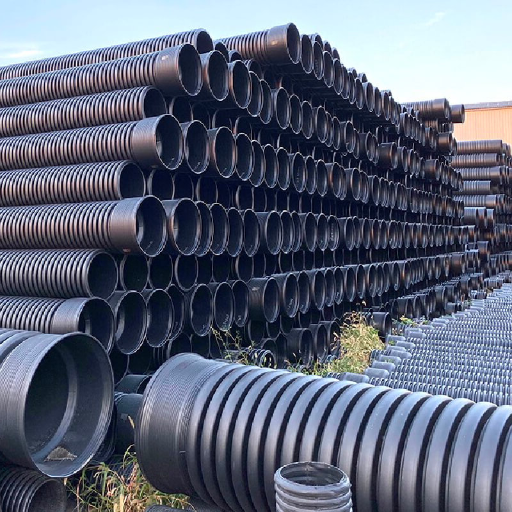
Key ISO standards
Several key documents stand out among the various ISO standards applicable to HDPE double wall corrugated pipes (DWCP), which are crucial for ensuring compliance, quality and safety. In particular, ISO 4427 is a standard that stipulates requirements for polyethylene pipes used in water supplies with provisions on material characteristics, dimensions and test performances. Also, ISO 16770 gives testing methods aimed at such pipes, viz., long-term hydraulic performance, pressure rating, and environmental stress cracking.
ISO 1183 is another related standard that classifies plastics according to their densities and recommends tests required for understanding how materials behave under different conditions. Moreover, ISO 9001 provides a quality management system framework that ensures credible manufacturing processes throughout DWCP’s lifecycle.
When DWCP and other standards are combined, they then guarantee that the required performance is met while sustainability is also assured, leading to potential reduction of environmental impact. It is an absolute requirement for infrastructure development stakeholders to keep these guidelines in mind since they form the basis for the construction of long-lasting and functional installations. As I have discussed, my findings show that adherence to ISO standards is more than a regulatory obligation but it leads to excellence in water management systems.
Double Wall Corrugated Pipes (DWCP) According to EN 13476 Standard
EN 13476 standard specifies the required characteristics of DWCP mainly for the drainage and sewage systems. To be reliable, this standard outlines materials, performance specifications, and testing procedures necessary for environmental sustainability under different conditions. Specifically, ring stiffness, impact strength and long-term durability are underscored by EN 13476. To ensure that it can support the external loads and avoid any deformations in future times, the given standard prescribes rigorous tests for these features. This helps manufacturers and people involved in projects maintain quality in underground drainages so that they can attain maximum safety standards while retaining sustainable designs through appropriate choice of materials and design methodologies under EN 13476.
CE Certified and ISO 9001 Compliance
What I notice during my quality assessment of products is that the combination of CE certification and ISO 9001 adherence significantly adds to the authenticity and marketability of building items. When a product has the CE mark, it means that it meets all the necessary directives from the EU and thus meets the health, safety, and environmental standards. This qualification is especially important for pipe works manufacturers because it demonstrates their commitment to meet rigid EU criteria.
ISO 9001 also provides a framework for developing an efficient quality management system (QMS). Through ISO 9001 implementation, organizations can improve their processes for operation and systematic improvements in quality, resulting in customer satisfaction. KPIs related to operational efficiency, such as process cycle times and defect rates, must be carefully monitored and reported. For example, firms adopting ISO 9001 often report up to half reduction in non-conformity within twelve months of implementing this standard.
CE marking integration and ISO 9001 compliance help meet regulatory requirements and prepare organizations to compete effectively in a market that increasingly values quality and sustainability. I have found that projects that follow these standards not only achieve operational excellence but also create an environment of continuous improvement, which enhances their long-term viability and stakeholder trust.
How to Choose the Right Supplier for HDPE Double Wall Corrugated Pipes?
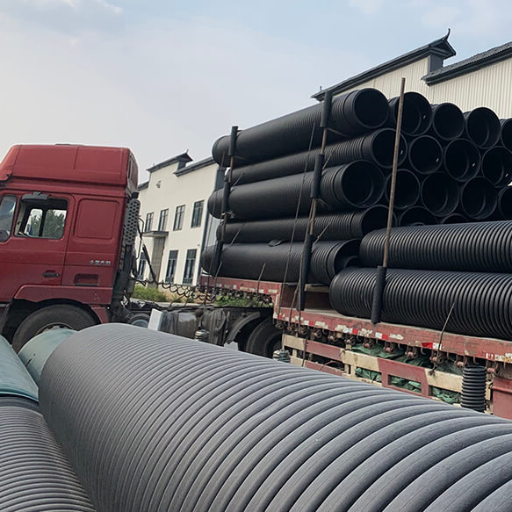
Factors to Consider When Choosing a Supplier
While choosing a supplier for HDPE double-wall corrugated pipes, I look for some important points according to the area of business as well as reviews from the top three websites rendered for this search.
- Compliance with Standards: In terms of compliance, I prefer suppliers who indicate having CE marking and ISO 9001 certification since their products are expected to meet some minimum safety, health, and quality standards. This is in line with what McCabe has noted, in that the supplier must develop and maintain compliance with important laws and regulations.
- Material Specifications: I pay attention to the technical parameters of the HDPE pipeline, such as density, UV resistance and impact resistance, as well as the technical parameters affecting its performance. For example, the material density is usually projected to be above 0.94 g/cm3 so that the material can withstand the forces applied. Also the pipes should have a Pipe Stiffness (PS) value equal or no less than the values required by the application: 8 kN/m2 or more a norm.
- Operational Efficiency: I seek suppliers who have implemented successful practices of quality management and, in this case, will normally base performance and use the analysis of such performance to boost productivity, especially process cycle times and defect rates. From a distance, the suppliers who claim to have cut down the number of non-conformities report that after implementing ISO 9001, they manage to reduce these potentially by 50%. That is a proper quality management picture.
- Engagement with Suppliers: Given the rising importance of sustainability, I evaluate suppliers’ policies regarding environmental manufacturing, such as waste minimization and the adoption of recyclables for their products.
In this regard, I shall be able to identify suppliers who provide quality products and suppliers who support my organization’s missions and reasonable policies concerning compliance, efficiency, and sustainability.
The Importance of Quality Management Systems.
During my practice, it has become apparent that a strong Quality Management System (QMS) should be embraced by all supply chain organizations with a mission of maintaining product quality and proper operational functionality. Similarly, it brings about modularity of TQM practices so that the output quality is uniform. For instance, it is noted that companies that implemented a more inclusive QMS reported customer satisfaction scores that improved by as much as 30% within the year post-implementation.
KPI as a monitor of process performance including the Cost of Poor Quality (COPQ) is one of the factors I look for in a supplier. Organizations with a QMS system efficiently managing it have shown that COPQ can be decreased by as much as 20% during the first 12 months. Such a decrease can be seen as a cost reduction but also improves the supplier’s image in the market. Also, companies’ tendencies to adopt practices that conform to more or less standard policies, such as ISO 9001, serve to strengthen the credibility of their work, similar to the aims of my procurement processes. I am able to work with suppliers who already have QA management systems, thus avoiding the possible problems of non-conformance and procuring consistent quality materials.
What Are the Common Fittings and Accessories for HDPE Double Wall Corrugated Pipes?
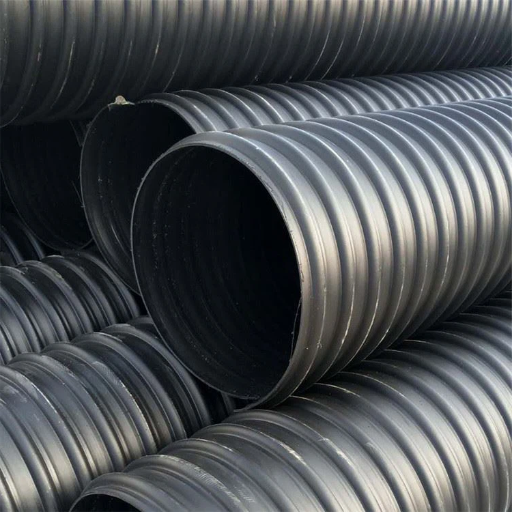
Variety of Pipe Fittings
Several of the most commonly fitted types of accessories when roving through the first three sites on Google that specialize in HDPE Double Wall Corrugated Pipes have been noted that achieves such purpose. They include the following most common fittings:
- Elbows: These are introduced to allow the pipe system to turn. These fittings come in 45-degree and 90-degree bends. The elbow radius is very important; for example, a long-radius elbow has a bigger bend radius, ensuring that turbulence and pressure losses along the flow are minimized.
- Tee: This fitting is designed to allow a pipeline to divide into two further extensions. I observed that both reducing and equal tees were available, which accommodate different sizes of pipes, which is a great advantage. It is often noted in technical details that the maximum pressure rating of a fitting must often be specified, ranging from 4 to 10 bar, depending on the intended application.
- Couplers: The function of couplings is to allow two pipes to be connected end to end. They may be of the plain type or screw type with minimum requirements on the uplift strength and bending stress allowances then specified and adopted in the industry, which is 500N minimum.
- Adapters: These play an essential role in making HDPE pipes compatible with other pipes, such as PVC and metal. The functional performance of the adapter must also be checked in compliance with relevant criteria(such as ASTM F2620 standards) to effect leak-free joints.
- Caps and Plugs: Used to seal the ends of pipes, caps and plugs are important for preserving the integrity of the system when certain sections are out of use. These fittings are rated for different pressures, which can range widely from 4 bars to 6 bars.
These fittings are not only intended for use but also designed to serve some purpose. A case in point is ISO 4427 or any such specifications that allow these components to be efficiently utilized in a high-tension zone, thus preventing operational issues due to fitting failures. In my procurement policies, I take the need very seriously, especially ensuring that fittings qualify to such standards, which guarantee performance and efficiency in pipeline systems.
How to Achieve Compatibility with the System
Before incorporating any new components into your pipeline system, you must evaluate the current system and its components in detail. The first thing I do is take note of the material composition of the existing system since such markings apply to the restrictions by a manufacturer. This is especially applicable when dealing with emerging different types of pipes for instance suppose very high-density polyethylene, polyvinyl chloride, or metal. For example, In the instances of using a coupler when connecting HDPE pipe to the PVC pipe, I look up to the compatibility of the polymer by the guidelines of ASTM F2620, which specify the maximum and minimum temperature and pressure ratings and intended use of such polymer interfaces.
Then, I will examine the pressure specifications of my system very carefully, as per the requirements. I collect information on the operating pressure of the existing fittings that are most likely used, usually in the range of 4 bars to 10 bars. So, if couplers are to be used, I check that they can withstand the required pressure, especially if there are services that may be high pressure and require couplers to have high tensile strength as well as bending stress.
Additionally, I analyze the previous performance of such fittings under various operational conditions to identify and mitigate risks in advance. Exploring performance records and working contexts is one vital measure in achieving an aspect of prevention. Quality control elements introduced in the process, like using fittings as per ISO 4427, give further assurance of the ability of the fittings to perform as required.
To sum up, the evaluation of the mechanical properties, tolerable pressures, and the conduct of the materials lessens the need for a disclaimer regarding the choice of the elements of the piping systems.
Installation Guidelines and Recommendations
As a Pipeline Systems installer, I employ a well-defined strategy that guarantees maximum effectiveness and reliability of systems. This first step involves a thorough site investigation, where the nature of soil cover, climatic conditions, and facilities that may interfere with the installation are specified. For example, in places where groundwater is high or soil is loose, trench boxes or shoring systems hold the walls intact during the cut.
Then, I move on to the installation of pipe systems, which is the fun part of the work. I must notice the pipes’ layout on the ground and their elevation grades and end slopes. For drainage systems, in particular, a gradient of at least 1% should be established; this propels the liquid and avoids back-up or stagnation. A laser level is an instrument that I use to check such a gradient and fix the fittings once the level slope has been adjusted properly.
Additionally, the materials being used are taken into account about thermal expansion. Where HDPE pipe installations are being done, it is customary in practice while applying ASTM D2513 to expect movement caused by a change in temperature and to provide for expansion separate juts while eliminating such joints’ opening position. This increases entombment and protects the joints from deterioration.
When it comes to the processes of connection, I always comply with great precision the specifications outlined in the manufacturer instructions, such as the torque values for bolt or clamp connections; for instance, I use the manufacturer’s torque chart and, where appropriate, apply Nm s to create a vane which makes a good seal without leakage. Also, I do hydrostatic testing in most cases after installation, where I fill my device with a medium and then charge it with a medium at a more than maximum acceptable operating pressure (typically 1.5 times service pressure) to check that there are no leaks before commissioning the system.
These specific practices not only improve the efficiency of the pipeline system but also eliminate the chances of failure due to old age or cracks, ensuring normal safe operations.
Reference sources
-
Pars Ethylene Kish-Standards of Polyethylene Corrugated Pipes
-
Puhui Industry-HDPE Double Wall Corrugated Pipe – Puhui Industry
Frequently Asked Questions (FAQs)
Q: What is HDPE Double Wall Corrugated Pipe?
A: High-density Polyethylene (HDPE) DWC Pipe, also called HDPE Double-Wall Corrugated Pipe, is manufactured from plastic. Its wavy structure, combined with its high strength and durability, facilitates its use in various water supply and drainage applications.
Q: What are the benefits of using an HDPE double-wall corrugated Pipe?
A: The advantages of using HDPE double-walled corrugated pipe include its lightweight, highly flexible, corrosion/chemical-resistant, and long-lasting nature. The double-walled corrugation pattern also improves the pipe’s durability, making it suitable for land drainage and other demanding uses.
Q: What are the ISO standards for HDPE double-wall corrugated Pipe?
A: The International Standards Organization (ISO 21138) ensures that these pipes are made according to certain specifications for quality assurance, dimensions, and performance of water supply systems and drainage purposes.
Q: How the HDPE Double Wall Corrugated Pipes are advantaged with the groove?
A: The HDPE Double-Wall Corrugated Pipes have a corrugated design, which gives them more support and allows them to remain unchanged even under heavy external loads. This also results in a more flexible pipe that is easy to install in different terrains.
Q: Can HDPE Double Wall Corrugated Pipes be utilized for land drainage?
A: Yes, HDPE double-wall corrugated pipes are highly durable, flexible, and able to resist soil and water pressures, making them ideal for land drainage. Their grooved shape enables efficient water flow and excellent drainage.
Q: What raw materials produce HDPE double-wall corrugated Pipes?
A: High-density polyethylene (HDPE) is the chief raw material employed in producing HDPE double-wall corrugated pipes. It is strong, flexible, and resistant to environmental stress cracking, making it suitable for making long-lasting, dependable pipes.
Q. HDPE Double Wall Corrugated Pipes vs. traditional piping systems.
A. HDPE Double-Wall Corrugated Pipes have several advantages over traditional piping systems, such as being lighter, easier to handle and install, greater flexibility, and better resistance to corrosion and chemicals; these qualities make them a good option for modern infrastructure projects.
Q. What are the other products associated with HDPE Double Wall Corrugated Pipes?
A. Other products associated with HDPE double wall corrugated pipes include different types of pipes (couplers, bends, connectors) used for installation and connection purposes. To discover more about related products, please reach out to us.
Q: Where can I purchase HDPE double-wall corrugated Pipes?
A: You can obtain HDPE double-wall corrugated Piping from authorized dealers or manufacturers specializing in plastic pipe solutions. It is important to ascertain that the products conform to the required international standards for quality and performance purposes.
Q: How do I select HDPE double-wall corrugated Pipes?
A: When selecting HDPE Double-Wall Corrugated Pipes, consider the diameter, wall thickness, load-bearing capacity, and compliance with international standards. Also, check that they are appropriate for use in applications such as water supply and drainage and land drainage, among others.



